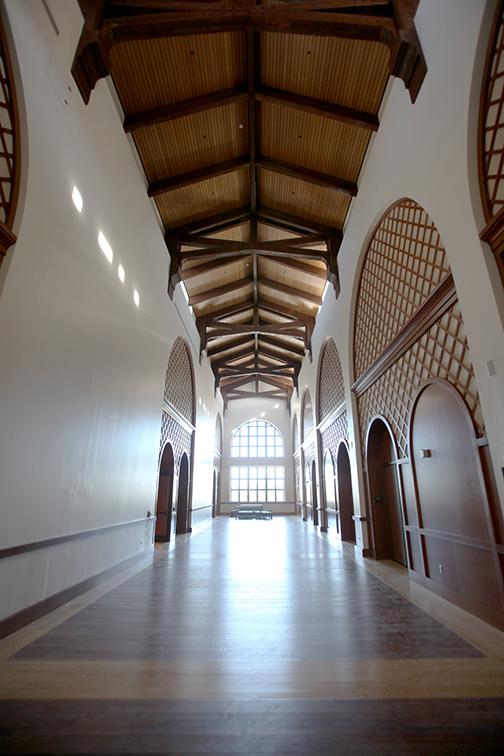San Diego State hosted Nobel Laureate Dr. Richard R. Schrock on Wed. April 6, as the inaugural speaker for the Provost Distinguished Lecture Series.
Over 600 people attended Schrock’s speech in Montezuma Hall. The American Chemical Society planned their 75th anniversary to coincide with the lecture. The audience ranged from high school students to graduate students to industry professionals.
Schrock won the 2005 Nobel Prize in Chemistry with Robert H. Gubbs and Yves Chauvin for his work with a chemical synthesis technique called olefin metathesis, an organic reaction dealing with carbon bonds. Their work with the catalysts for the reaction has led to a reaction that creates fewer harmful byproducts than other organic reactions. He was introduced by both President Hirshman and the Vice President of Research and Graduate Dean for SDSU, Stephen Welter.
“We see this series as an opportunity for our students to learn outside the classroom, for all of us to be uniquely inspired,” Welter said. “We have the very rare opportunity today to meet someone who basically created a brand new area of chemistry.”
The lecture began with his background information on where he grew up and attended school. He is a native San Diegan, graduating from Mission Bay High School in 1963. Dr Schrock received his Bachelor of Arts from University of California, Riverside and his doctorate from Harvard University.
He discussed the different professors he worked with in both his undergraduate and doctoral years and the effect they had on his developmental years as a chemist. At Harvard, he worked under Dr. John Osborn.
“I was his first student,” Dr. Schrock said. “He wasn’t a physical chemist. I decided I wouldn’t be very good at physical chemistry. I wanted to make things, I didn’t just want to measure things.”
He then traveled to the University of Cambridge to do postdoctoral research with Lord Jack Lewis after marrying Nancy Carlson. Dr. Schrock discussed his work in the Experimental Station for DuPont, a chemical company, after returning to the United States. He went into detail on his experiments that eventually led to his joining the faculty of the Massachusetts Institute of Technology in 1975. His work at MIT eventually landed him a Nobel Prize in his ‘green chemistry.’
The methods Dr. Schrock developed are now used to produce important pharmaceuticals, fuels, materials in a more efficient and environmentally friendly way. They also produce fewer byproducts and dangerous waste.
“Science and new discoveries could offer major global impact that will affect all of our lives,” said Dr. William Tong, a professor at SDSU and Chemistry and Biochemistry Department Chair. “His discoveries and research accomplishments were very good examples of how his science was helping us in our daily lives.”
Keagan Casey, a pre-med third year student said it was interesting to see the material he is tested on being applied to the real world, although the presentation did get a bit technical in some parts.
“I benefitted from the lecture in the sense that I was able to see there’s a purpose to what I’m studying in school, that I’m not doing this for nothing,” Casey said. “If I’m not being recognized what I’m achieving right now, I’m going to be recognized for what I achieve in the future.”
Dr. Tong said he thought the speech was both inspirational and enlightening for many students in attendance.
“He was telling all the students to work hard and not give up and to be determined,” Tong said. “Dr. Schrock has invented all these new methods that are going to be in future textbooks forever. Every chemistry student will know his name.”







